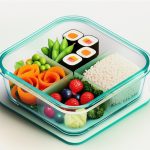Being a truck driver is a demanding job, and maintaining a healthy diet can seem like an uphill battle. Long hours, limited access to fresh food, and the constant temptation of fast food options make it challenging to prioritize nutrition. However, eating well is crucial for your overall health and well-being, enabling you to stay focused, energized, and safe on the road. This comprehensive guide provides practical, actionable strategies to help you make healthier choices, plan meals effectively, and overcome the unique challenges of maintaining a nutritious diet while trucking. For more tips, check out this helpful guide on healthy eating on the road.
Why Healthy Eating Matters for Truck Drivers
Before diving into the how-to, let’s emphasize the importance of healthy eating for truck drivers:
- Improved Energy Levels: Nutritious meals provide sustained energy, preventing energy crashes and fatigue during long shifts.
- Enhanced Focus and Alertness: A balanced diet supports cognitive function, helping you stay sharp and responsive behind the wheel.
- Reduced Risk of Chronic Diseases: Healthy eating can lower your risk of obesity, diabetes, heart disease, and other common health issues among truck drivers.
- Better Mood and Mental Well-being: Proper nutrition contributes to improved mood, reduced stress, and enhanced overall mental health.
- Increased Longevity: Prioritizing your health through diet can lead to a longer, healthier, and more fulfilling career on the road.
Mastering the Fundamentals of Healthy Eating on the Road
1. Strategic Meal Planning: Your Foundation for Success
Meal planning is the cornerstone of healthy eating for truck drivers. It’s about taking control of your diet and making informed choices, rather than relying on whatever is available at the last minute.
- Weekly Menu Creation: Dedicate time each week to plan your meals. Consider your schedule, route, and available cooking facilities.
- Batch Cooking: Prepare large quantities of meals in advance and portion them into individual containers. This saves time and ensures you always have a healthy option available.
- Portion Control: Pre-portion snacks and meals to avoid overeating. Use smaller containers and be mindful of serving sizes.
- Embrace Flexibility: While planning is essential, allow for some flexibility. Life on the road can be unpredictable, so be prepared to adjust your plans as needed.
2. Smart Shopping: Stocking Your Truck for Success
The key to smart shopping is to focus on nutritious, non-perishable foods that can withstand the rigors of the road.
- Prioritize Supermarkets: When possible, shop at supermarkets for a wider selection of healthy options at better prices.
- Focus on Non-Perishables: Stock up on canned beans, nuts, seeds, whole-grain crackers, dried fruits, and protein bars.
- Explore Truck Stop Options: Many truck stops now offer healthier choices, such as pre-cut fruits and vegetables, yogurt, and salads.
- Read Labels Carefully: Pay attention to nutrition information, including calories, fat, sugar, and sodium content.
- Avoid Impulse Buys: Stick to your shopping list and resist the temptation to purchase unhealthy snacks and processed foods.
3. Cooking on the Road: Simple and Nutritious Recipes
Cooking in your truck doesn’t have to be complicated. With a few basic appliances and some simple recipes, you can enjoy healthy, home-cooked meals on the road.
- Essential Appliances: Consider investing in a microwave, a small electric skillet, a portable camping stove, or a slow cooker.
- Easy Recipes:
- Oatmeal: A quick and nutritious breakfast option. Add fruits, nuts, or seeds for extra flavor and nutrients.
- Soups: Prepare homemade soup in advance and store it in a thermos.
- Salads: Combine pre-cut vegetables, lean protein (canned tuna or chicken), and a light dressing.
- Overnight Oats: Combine oats, milk, yogurt, and your favorite toppings in a jar and refrigerate overnight.
- Quick Stir-Fries: Use pre-cut vegetables and lean protein for a fast and healthy meal.
4. Navigating Truck Stop Menus: Making Smart Choices
Truck stops are a common stop for drivers, but with planning you can optimize your food choices.
- Embrace Menu Savvy: Aim for high protein dishes and vegetables.
- Opt for Grilled or Baked Options: Choose grilled chicken, baked potatoes, or steamed vegetables over fried foods.
- Load Up on Veggies: Add extra vegetables to your meal whenever possible.
- Be Mindful of Portion Sizes: Avoid oversized portions and share meals if necessary.
- Skip the Sugary Drinks: Choose water, unsweetened tea, or diet soda instead of sugary beverages.
5. Hydration: Fueling Your Body with Water
Staying properly hydrated is essential for maintaining energy levels, focus, and overall health on the road.
- Carry Reusable Water Bottles: Keep several water bottles in your truck and refill them throughout the day.
- Set Reminders: Use your phone or a hydration app to remind you to drink water regularly.
- Infuse Your Water: Add fruits, vegetables, or herbs to your water for extra flavor.
- Avoid Sugary Drinks: Limit your intake of soda, juice, and other sugary beverages.
6. Fitness on the Road: Incorporating Physical Activity
Finding time for exercise while trucking can be challenging, but incorporating even short bursts of activity can make a significant difference.
- Walking: Take short walks during your breaks. Park farther away from buildings to add extra steps to your day.
- Stretching: Stretch regularly to prevent stiffness and fatigue.
- In-Cab Exercises: Do simple exercises in your truck’s cab, such as squats, lunges, and push-ups.
- Use Rest Stop Facilities: Take advantage of rest stop gyms or walking trails.
- Invest in Portable Equipment: Consider purchasing resistance bands or a jump rope for easy workouts on the road.
7. Weight Management: Finding What Works for You
Weight management is a personal journey. Find what works for you by trying different approached.
- Portion Control: Be mindful of serving sizes and avoid overeating.
- Intermittent Fasting: Schedule your meals during a specific window of time each day.
- Consulting a Professional: See a registered dietitian or certified personal trainer for personalized guidance.
Here’s how these approaches compare:
| Approach | Pros | Cons | Considerations |
|---|---|---|---|
| Portion Control | Simple, flexible, sustainable. | Requires consistent effort, may initially lead to hunger. | Use smaller plates, measure serving sizes, be mindful of hunger cues. |
| Intermittent Fasting | May promote weight loss, improve insulin sensitivity. | Requires careful planning, may not be suitable for all schedules. | Start slowly, choose a fasting schedule that fits your lifestyle, stay hydrated. |
| Professional Consultation | Personalized guidance, expert advice, tailored to individual needs. | Can be expensive, requires commitment to follow recommendations. | Find a qualified professional with experience working with truck drivers or similar populations. |
8. Technology to the Rescue: Apps for Healthy Eating
Several apps can help you track calories, plan meals, and find healthy food options along your route.
- Calorie Tracking Apps: MyFitnessPal, Lose It!, and Cronometer.
- Meal Planning Apps: Yummly, Plan to Eat, and Mealime.
- Healthy Restaurant Finders: HappyCow (for vegetarian and vegan options) and HealthyOut.
Meal Prep for a Week as a Truck Driver: A Step-by-Step Guide
Key Takeaways:
- Plan ahead strategically.
- Prioritize protein, whole grains, healthy fats, fruits, and vegetables.
- Invest in a reliable cooler and portable food warmer to maintain safe temperatures.
- Safely handle your food.
Step 1: Plan Your Menu
Before heading to the grocery store, create a weekly menu of simple, easy-to-prepare meals. Consider your usual routes and available facilities, such as access to a microwave or cooler.
Step 2: Smart Grocery Shopping
Stock up on non-perishable staples such as:
- Whole grains
- Canned goods
- Healthy snacks
Prioritize fresh foods like fruits, vegetables, proteins, and dairy. Be sure to use these quickly to avoid spoilage.
Step 3: Prep Like a Pro
Dedicate a few hours each week to preparing your meals. Wash and chop vegetables, cook grains, and portion out meals into individual containers.
Step 4: Pack Your Meals Securely
Use insulated containers, such as a thermos. Store cold dishes in a cooler with ice packs. Make sure your food stays at a safe temperature.
Stay Committed to Healthy Eating
Eating healthy while trucking is a journey, not a destination. Celebrate your successes, learn from your setbacks, and focus on making sustainable changes that will benefit your health and well-being for years to come. You’ve got this!
- Glass Bento Boxes Offer a Healthy, Eco-Friendly Lunch Solution - December 20, 2025
- Glass Bento Containers Make Packing Lunch Easier and Healthier - December 19, 2025
- How Glass Bento Box Containers Make Meal Prep Easier - December 18, 2025










